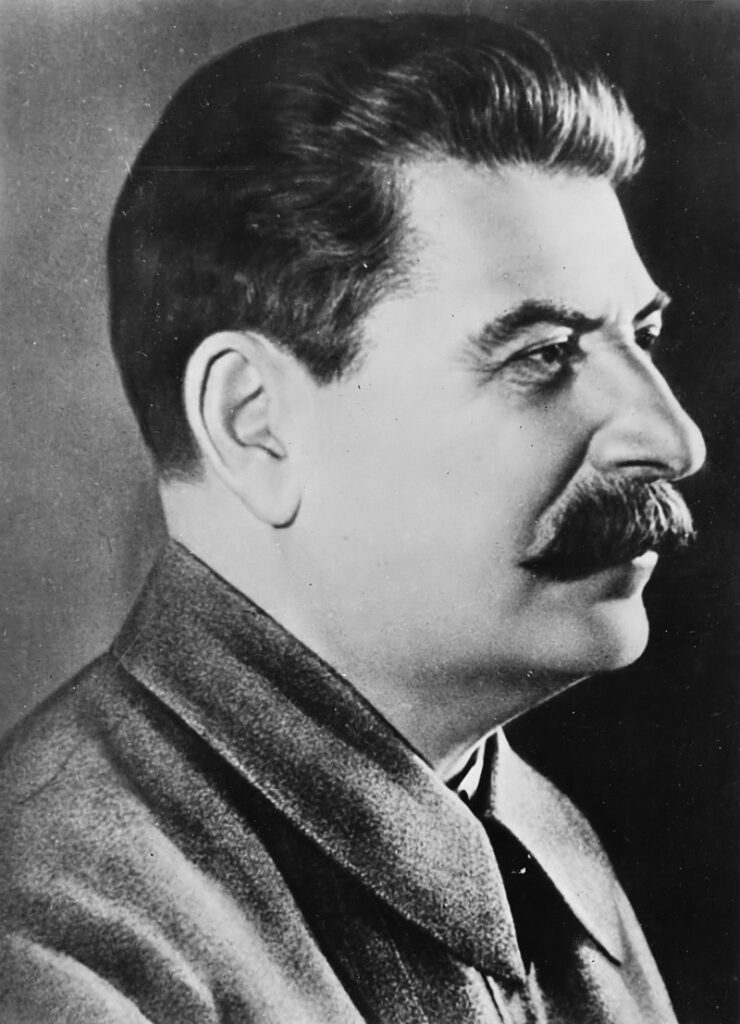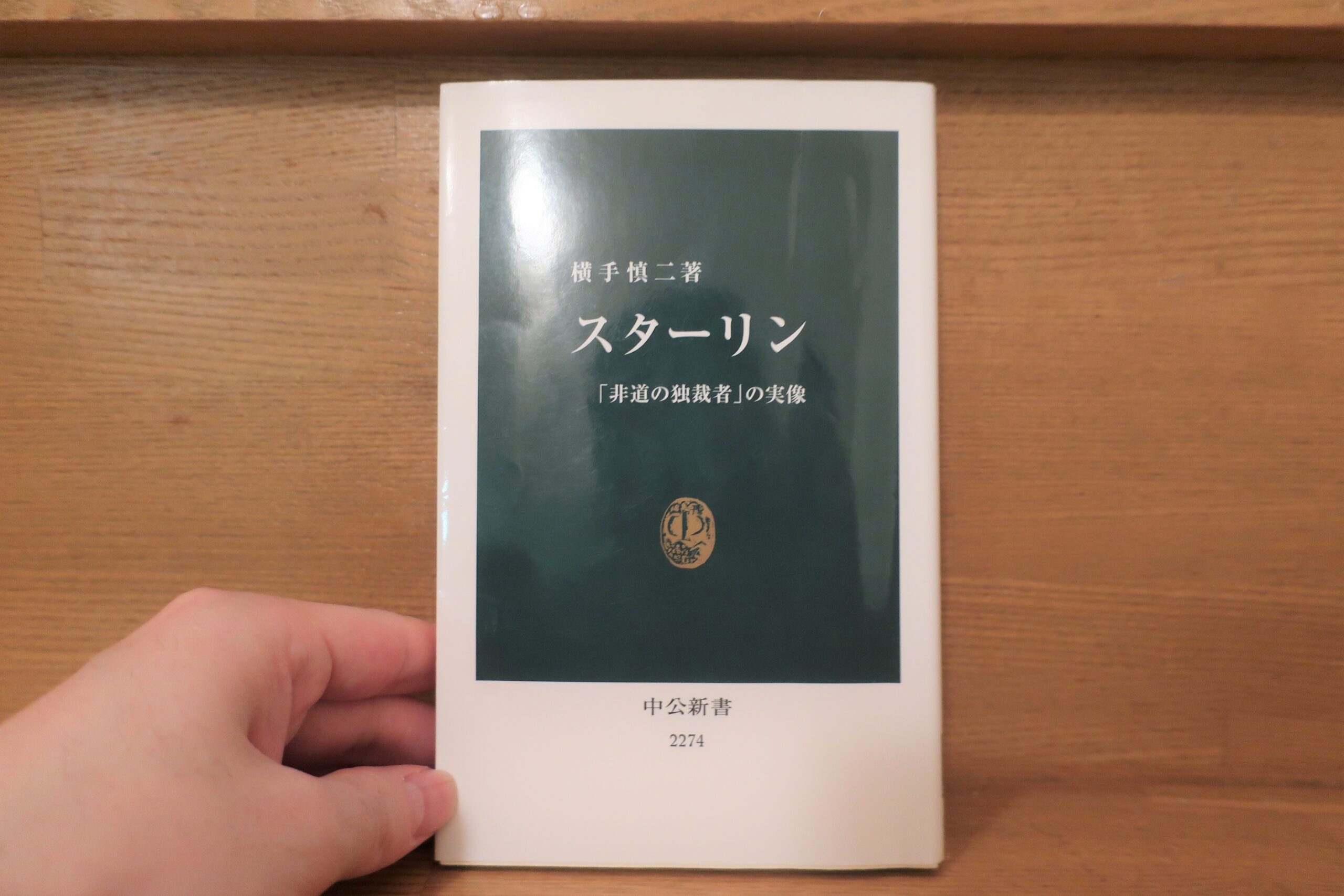A recommended book for an introduction to Stalin! Summary and Impressions of Shinji Yokote's "Stalin: The Real Image of the 'Outrageous Dictator'"

We are pleased to present "Stalin" by Shinji Yokote, published in 2014 by Chuokoron Shinsha.
So far I have talked about the Russian Revolution and Lenin, but from this article I would like to go into Stalin.
Let's take a quick look at the book.
The image many Japanese have of Stalin is that of a "dictator extraordinaire. After consolidating his leadership of the Soviet Union at the end of the 1920s, Stalin led an agrarian collectivization and a major purge that resulted in a large number of deaths, and in his later years he had his close associates arrested one after another out of suspicion for hunting. Why, however, do so many Russians still hold him in high esteem? Based on new historical documents after the collapse of the Soviet Union, this book traces the life of the Georgian-born revolutionary who emerged as a revolutionary and fought Hitler and the U.S. as a supreme leader.
AmazonProducts Page.
In Japan, Stalin has a strong image as a dictator of terror who caused a large number of deaths in the Great Purges. However, according to the author, in modern Russia, Stalin is not necessarily regarded as a great villain. The "Introduction" is the best way to understand the characteristics of this book, so I will quote from it, even though it is a bit long.
Many historiography books about him have been written about the great number of people who died of starvation in the process of agricultural collectivization starting in the late 1920s, or about the great purges of the 1930s, in which many innocent people were arrested one after another and then many of them disappeared, or about the many minorities in the frontier areas of the Soviet Union who were forced at gunpoint to leave their native villages during the period around World War II. The book also describes how, before and after World War II, a number of ethnic minorities in remote areas of the Soviet Union were forced at gunpoint to leave their home villages, or how numerous nationals and many foreign internees, including Japanese, were sent to camps where they were forced to work hard and die senseless deaths, and so on.
Whether directly or not, Stalin's name has been associated with such horrific events in Soviet history. From that point of view, even though certainly no one would describe Stalin as directly as Conquest (*a famous British historian. From this perspective, it seems that certainly no one sees Stalin as a dictator who repeated unfathomable misdeeds and atrocities, even if not as directly as Conquest (a famous British historian; blog author's note).
However, there is a very different image of Stalin. This is evidenced by the fact that even today, a significant number of people in Russia still revere Stalin and follow him as an outstanding leader. According to Dmitry Trenin (Director of the Moscow Center, Carnegie Endowment for International Peace), a well-known commentator on Russian affairs to the West, Stalin's personality and role in Russia today are split down the middle, with positive and negative assessments of his role in Russian history. The positive and the negative assessments of Stalin's role in Russia's history are in direct conflict, according to Mr. Stalin.
Such an assessment is not temporary. According to a public opinion poll in Russia conducted in 2003, 50 years after his death, 34.7% of the respondents viewed his role positively, while 40.3% viewed it negatively.
In 2008, when Russian state television asked for opinions on who represented Russia, Stalin occupied the third position (some say he was actually the most popular), behind Alexander Nevsky, the hero of the ancient Rus' period, and Pyotr Stolypin, the statesman who engineered a major change in the Russian political system in the early 20th century. (Some say that he was actually the most popular).
In other words, in the recent understanding of the Russian people, Stalin, quite unlike Hitler in Germany, cannot be dismissed as a dictator whose sole purpose was destruction, an exception in the history of the Russian nation. He is regarded by many Russians as an indispensable figure in understanding their country.
Chuokoron Shinsha, Shinji Yokote, Stalin, p. ii-iii
Some line breaks have been made.
A survey by Russian state television places Stalin in third place among Russia's great men. Some even believe that Stalin is actually ranked first.
However, I also read this and thought this.
It may be that those who support Stalin are those whose lives were protected or survived the Stalinist regime. Those who disagreed with him may have ceased to exist because they were purged in large numbers and sent to concentration camps or murdered.
Moreover, although a trend of criticism of the old ways was born after the collapse of the Soviet Union, it is said that under the current Putin administration there is a movement to return to the old ways again. Under such circumstances, it is difficult to say how much we can trust the research conducted by Russian state-run TV, a broadcaster directly under the authority of the state.
I'm not sure how I feel about that, but that's just my opinion. Anyway, let's go back to this book.
Stalin is not as negated in Russia as the Japanese think. In fact, it seems to be the trend in Russia that Stalin is rather highly regarded. In response, the author continues
Why is this happening? Have most Russians in the 21st century forgotten all about the disastrous facts brought about by Stalin? Or is Russia still a mystery that outsiders cannot understand? Or is there something wrong on the part of those living outside Russia? In other words, are foreigners, like Conquest, missing something important about him?
Based on this awareness, this book is intended to rethink the question of who Stalin was. In other words, by tracing Stalin's life once again, this book aims to examine why so many Russian citizens still think of him and feel a sense of attachment to him.
Needless to say, this is not to paint a rosy picture of the dark past of starvation and the Great Purges that accompanied agricultural collectivization. Since Russians today, who recognize such facts as facts, still consider it incorrect to unilaterally condemn Stalin, we believe that it may be us, not them, who do not know him. In other words, we ask how much do we know about Stalin? (omitted).
A Japanese intellectual once wrote that Japanese people today have no choice but to consider the question of what communism is through the Soviet Union and what kind of country the Soviet Union is through communism. In accordance with this secret, this book is an attempt to understand Russia through Stalin, and to understand Stalin through Russia. Although the issues differ from period to period, the intention is the same: to understand a country located in the north.
Chuokoron Shinsha, Yokote Shinji, "Stalin," p. iii - v
Some line breaks have been made.
Rather than simply condemning Stalin as a great villain, the book explains who Stalin was from the perspective of why Russians still value him.
I recommend this book because it is an easy to read and unbiased introduction to Stalin.
However, there is one point of concern. That is this point.
Most of the recollections of those who knew Stalin from his birth to his boyhood seem to convey only unremarkable episodes. At the very least, rather than revealing what he was feeling and thinking at the time, they seem to be "recollections" spun out in accordance with the projection of a prearranged personality onto him as a boy.
One of them, for example, notes that the town of Gori, where he spent his boyhood, was notorious for drinking, praying, and fighting, and that the boy who would eventually become Stalin there inherited his father's violent temperament and repeatedly fought with those around him.
Those who attest to such "facts" seem to be trying to say that the man who would later become Stalin was a violent, power-oriented boy from early on. In fact, some writers have collected episodes of this kind to argue that the Stalin of Soso's time was not only a bad boy, but also a peculiar type of boy with tremendous ambition in his heart. American historical novelist Montefiori's biography of Stalin, for example, is typical of such books.
Chuokoron Shinsha, Shinji Yokote, Stalin, p. 27-28
Some line breaks have been made.
From the next article to the very Montefiori's pointed out here.The Biography of Stalin."to introduce the book, but it seems to me that the book is not as arbitrary in its collection of material and singular in its image of Stalin as Mr. Yokote suggests.
In fact, Montefiore even criticizes them for doing so.
It is true that much has been written about how tumultuous his youth was. Nevertheless, it is a fine line to say that he was a typical boy who "collected only episodes of this kind" and even claimed that he was a peculiar type of boy with tremendous ambition in his heart.
Not being a professional researcher, I can't say much more, but this is the only point in the book that bothered me a little. This is just my personal opinion. I really think this is the difficulty of history.
However, for an introductory overview of Stalin's life, this new book is compact and easy to read, so this book seems to be a recommended one.
This is "Reading Shinji Yokote's "Stalin: The Real Image of the 'Outrageous Dictator'" - a recommended book for an introduction to Stalin.
Next Article.
Click here for a list of articles about Stalin.
Related Articles





































